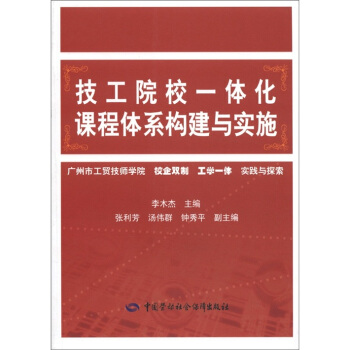![西方语言学与应用语言学视野·语言发生学:理论与方法文集 [Genetic Linguistics:Essays Theory and Method]](https://pic.qciss.net/10175557/b5390e49-ab31-4b7b-8716-0872eff094d4.jpg)

具体描述
编辑推荐
《语言发生学:理论与方法文集》汇集了格林伯格讨论语言发生学的理论和方法,以及世界语言发生学分类的重要论文,由威廉·克罗夫特(W.Croft)选编。 全书分为“语言分类,语系和语组”、“语言分类,语音对应和重构”、“印度洋-太平洋诸岛大语系,美洲印第安大语系,欧亚大语系”、“语言发生学与人类历史”这四个部分,每部分都包括若干篇论文。内容简介
《语言发生学:理论与方法文集》汇集了格林伯格讨论语言发生学的理论和方法,以及世界语言发生学分类的重要论文,由威廉·克罗夫特(W.Croft)选编。全书分为四个部分,每部分包括若干篇论文。第一部分是语言分类;第二部分是关于语言分类、语音对应、原始语重构的观点论述;第三部分是对印度洋一太平洋诸岛语言分类、美洲印第安语言分类、欧亚语系分类的广泛论述;第四部分是从历史、考古、人类迁徙等角度撰写的一些书评和短文。《语言发生学:理论与方法文集》可以作为历史语言学家、历史学家、考古学家和其他专业专家的参考,也可供研究生学习了解格林伯格语言发生学分类的思想、观点和方法。
作者简介
约瑟夫·哈罗德·格林伯格(Joseph HaroldGreenberg),(1915-2001)是美国著名语言学和人类学家。他通晓多种语言,一生著述丰富。作为语言学家,他获得了广泛的赞誉,是第一个入选美国国家科学院的语言学家,还曾担任美国语言学会主席等职。他是迄今为止人类语言发生学领域最多产的学者,也是世界语言类型学的主要奠基人之一。目录
西方语言学视野》总序《语言发生学:理论与方法文集》导读
原书目录
前言
作者介绍
第一部分:语言分类,语系和语组
1.历史语言学与无文字语言(1953)
2.语言的发生学关系(1957)
3.语言系属分类的问题(1957)
4.中美洲和南美洲语言的分类(1960)
4.1 附录:中美洲与南美洲语言的暂拟分类
5.语言分类的方法论(1963)
第二部分:语言分类,语音对应和重构
6.语言发生学分类的原则(1987)
6.1附录:语言年代学应用于多语言的一般方法(1987)
7.语言学与生物学的归并与分化(1999)
8.语言发生学的证明概念(2000)
9.闪含语词源词典述评:重构的语料(1996)
10.原始语言变体:历史语言学与社会语言学的关联(1989)
11.印欧学者的语言分类实践与美洲印第安语学者的语言分类理论(1990)
第三部分:印度洋-太平洋诸岛大语系,美洲印第安大语系,欧亚大语系
12.印度洋-太平洋诸岛大语系假说(1971)
12.1附录:Timothy Useher:格林伯格和乌尔玛关于大洋洲非南岛语系、非澳洲语系分类的比较
13.美洲印第安语言的分类:答Campbell(1989)
14.论捍卫美洲印第安大语系(1996)
15.阿尔泰语系存在吗?(1997)
16.欧亚大语系与诺斯特拉大语系的趋同现象(1998)
第四部分:语言发生学与人类历史
17.语言的类型与历史:评尼科尔斯《空间和时问上的语言多样性》(1993)
18.有混合语言吗?(1999)
19.语言与考古学:评伦夫鲁《考古学与语言:印欧语起源之谜》和鲁伦《世界语言指南(第一卷):分类》(1988)
20.大陆桥与新世界起源:语言学证据(1996)与格林伯格语言发生学理论和方法相关的著作目录
A.格林伯格语言发生学论著
B.有关格林伯格语言发生学论著的述评和讨论
作者索引
主题索引
精彩书摘
My purpose in this chapter is to discuss genetic classification; but I hope that the discussion will also help to explain and justify a deviation from what has become virtually a compulsory practice among American Indianists: the use of sound correspondence tables and asterisked reconstructed forms.In proceeding in this manner, this volume will resemble my first published classificational work, namely, that on African languages (Greenberg 1963). In that study I did not use a single asterisk or a single table representing a reconstructed sound system; and although I made occasional reference to particularly striking sound correspondences, these figured in no essential way as part of my method. There were, however, extensive lists of proposed etymologies, both lexical and grammatical, and shared grammatical irregularities. Yet it is reasonable to assert that this classification has won general acceptance and has become the basis for a considerable body of comparative work on African languages.These aspects of my methodology earned me a fair share of criticisms, of course, even from those who accepted and built on my results in their own investigations. The following are representative quotations. The first are the views of William Welmers (1973: 5, 6, 15, respectively): Greenberg has not, to be sure, demonstrated the existence of regular sound correspondences among all of the languages in any of the four language families he posits for Africa, although it has already been implied that such correspondences are the only real proof of genetic relationship. In fact, evidence that falls short of clear demonstration of regular phonetic correspondences may nevertheless be overwhelming But the nature of the similar forms with similar meanings which Greenberg cites, and the number of them, is such that the fact of genetic relationship can be considered established For all practical purposes the validity of the four families can be considered established.
前言/序言
用户评价
这本书的深远影响在于它成功地搭建了一座连接过去与未来的桥梁。它不仅仅是对既有理论的总结和回顾,更重要的是,它在方法论层面上对未来的研究指明了方向。作者在探讨传统方法论的瓶颈时,非常敏锐地捕捉到了当前语言学研究中那些尚未被充分解答的“痛点”。读到后期,我越来越清晰地感觉到,作者的意图并不仅仅是让我了解“是什么”,而是激发我思考“该如何做”——如何将这些深厚的历史积累,有效地运用到解决当代语言学面临的挑战中去。这种前瞻性和建设性,使得这本书超越了一般的学术专著,更像是一份充满远见卓识的“行动纲领”,激励着后来者去实践和创新。
评分这本书的封面设计给我留下了深刻的印象,那种沉稳又不失现代感的排版,恰到好处地暗示了其内容的厚重与专业。初翻开来,我就被那种严谨的学术氛围所吸引,它不像许多入门读物那样试图用过于通俗的语言来“稀释”复杂的概念,而是直接将读者带入了语言学研究的前沿地带。我特别欣赏作者在构建理论框架时所展现出的那种宏大视野,仿佛带领我们进行了一场穿越时空的思想漫步,从古老的印欧语系追溯到现代认知科学的最新发现,每一步都扎实有力,逻辑链条清晰可见。尤其是那些关于语言结构演变的历史性论述,读起来简直像是在解开一个尘封已久的密码,让人手不释卷,迫不及待地想知道下一个转折点在哪里。这本书的价值,绝不仅仅在于罗列知识点,更在于它提供了一种看待语言现象的全新视角,那种将历史的纵深感与现实的横切面结合起来的分析方法,让人耳目一新。
评分不得不提的是,这本书在梳理和比较不同学派观点时所展现出的那种近乎百科全书式的广博。它绝非一家之言,而是像一个公正的仲裁者,将几代语言学家们争论不休的焦点问题一一摆上台面,进行细致入微的剖析。我尤其欣赏作者对那些“灰色地带”的处理方式,他没有简单地褒奖一方而贬低另一方,而是深刻挖掘了不同理论的内在合理性和局限性。这种平衡的视角,极大地提升了本书的学术价值,使得它不仅是学习语言学理论的优秀教材,更是一部深入理解学术思想发展史的精妙著作。对于那些渴望全面了解该领域全貌的学者来说,这本书简直是不可多得的“工具箱”,里面的参考索引和术语解释都做得极其详尽,体现了编纂者深厚的专业素养和对读者负责的态度。
评分从阅读体验上来说,这本书带给我一种极为沉静和专注的感受。它仿佛是为那些习惯于深度思考的读者量身定做的——没有花哨的图表分散注意力,没有迎合大众口味的轻松幽默,只有纯粹的思想碰撞和概念的精雕细琢。每一个理论模型的建立,每一步论证的展开,都体现了作者对细节的偏执和对逻辑的坚守。我个人觉得,这本书最适合在一个人独处、环境安静的时候阅读,因为它要求你全身心投入到作者构建的思维迷宫中去探索。那种在复杂概念中穿梭,最终找到出口豁然开朗的成就感,是其他许多轻松读物无法比拟的。它真的像是一场对心智的“耐力训练”。
评分这本书的行文风格简直是一场智力上的酣畅淋漓。它那种不动声色的内敛,却蕴含着巨大的思想能量,每一个句子都像是精心打磨过的晶体,密度极高,需要读者投入相当的专注力去细细品味。我记得有一次,我对着其中一个关于句法功能迁移的论述看了足足半个小时,不是因为读不懂,而是因为作者的论证方式太精妙了——他没有直接给出结论,而是通过一系列看似不相关的历史案例层层递进,最终水到渠成地导向那个高屋建瓴的解释。这种“不言而喻”的叙述艺术,极大地满足了我作为一个资深阅读者的求知欲。它挑战了我的既有认知,迫使我不断地修正和深化自己对语言本质的理解,读完一个章节,感觉自己的思维被彻底梳理和重塑了一遍。
相关图书
本站所有内容均为互联网搜索引擎提供的公开搜索信息,本站不存储任何数据与内容,任何内容与数据均与本站无关,如有需要请联系相关搜索引擎包括但不限于百度,google,bing,sogou 等
© 2025 book.cndgn.com All Rights Reserved. 新城书站 版权所有













![外语学科发展状况综述系列:系统功能语言学研究现状和发展趋势 [Developments of Systemic Functional Linguistics] pdf epub mobi 电子书 下载](https://pic.qciss.net/11170094/rBEQWVEKFtkIAAAAAAkerIx_yssAAAbLwPb9m8ACR7E681.jpg)



![媒介的暗面:数字时代的媒介文化批评 [The Dard Side of Media: Criticism on Media Culture in the Digital Era] pdf epub mobi 电子书 下载](https://pic.qciss.net/11427876/rBEQYFMzsqgIAAAAAAGwHYKx70MAADYTwJSE0wAAbA1310.jpg)


